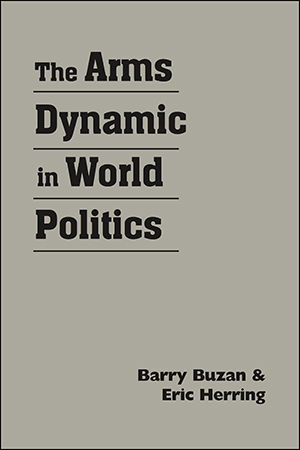What is the relationship between the arms dynamic and world politics? How has that relationship changed? Considering the entire set of factors that influence the nature of armed forces, this comprehensive book puts these essential questions into historical and analytical perspective.
Buzan and Herring focus on four themes. In Part 1 they discuss the ways in which the political and military impacts of technological revolutions spread. Part 2 surveys a range of explanations for arms- related behavior. Part 3 examines three ways of applying military power: the use of force, the making of threats, and the deployment of symbols. And Part 4 addresses military technology not primarily as a problem because it is in the hands of potential users, but as a creator of security problems in itself; in this section, regulatory approaches are discussed in terms of their political, economic, and military implications.
While the arms dynamic does not determine directly what happens in world politics, it does, the authors argue, shape in dramatic ways the context and possibilities of world politics; thus, an understanding of its influence is essential to a meaningful interpretation of international relations.
Barry Buzan is professor of international relations at the London School of Economics and Political Science. Eric Herring is lecturer in international politics at the University of Bristol.
"The Arms Dynamic in World Politics succeeds admirably in its efforts to place military technology within the broader context of military security and world politics.... It should be a ‘must buy' for security studies courses."—Malcolm Chalmers, International Affairs
"Buzan and Herring have written a first-class textbook for graduate-level students who want to be in top form for their final exams."—Survival
"An ambitious, noteworthy, and integrative book.... As a review of and contribution to the consolidation and even development of mid-range theory ... this volume is an unambiguous success."—Andrew L. Ross, American Political Science Review
"Recommended for college and university collections at all levels."—Choice
"The coverage is comprehensive, the discussions clear, and the analysis insightful. The Arms Dynamic in World Politics is a highly useful reference for the specialist, as well as a fine teaching tool."—Patrick M. Morgan
"This is a winner—a signal contribution to the fields of security/strategic studies and peace studies. Here is a volume that raises all the essential issues and cuts through hundreds of books and articles to get at the center of matters relating to arms in international relations.... Every teacher of international relations should have a copy."—Kal Holsti








